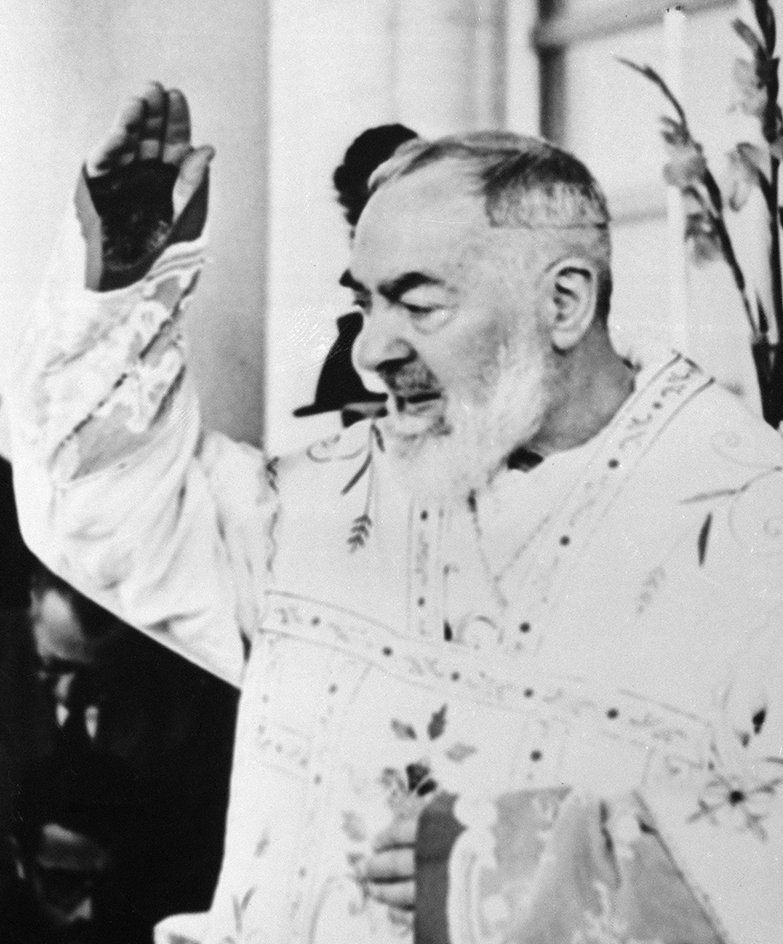Pio, Padre (1887-1968), is an Italian saint of the Roman Catholic Church. Padre (Father) Pio is known for the stigmata that he is believed to have borne from 1918 until his death. Stigmata are marks or wounds like those in Jesus Christ’s hands, feet, and side when he was crucified. They are said to appear supernaturally on certain deeply religious people.

Catholics honor Padre Pio for several gifts they believe he possessed. These gifts included prophecy, bilocation (being in two places at once), and the ability to read souls and to perform miraculous cures and religious conversions.
Padre Pio was born Francesco Forgione on May 25, 1887, in the small farming town of Pietrelcina, Italy. He suffered from ill health for much of his life. As a young boy, he loved praying and attending Mass. According to stories told about him, he could see and communicate with Jesus, the Virgin Mary, and his own guardian angel from an early age.
When he was 15, Forgione began a period of preparation to enter the Capuchin Order of the Friars Minor in Morcone, Italy. This religious community emphasizes solitude and penance—that is, showing sorrow for sins and seeking forgiveness. Forgione began calling himself Fra (Brother) Pio after Pope Saint Pius V, the patron saint of Pietrelcina. His fellows in the order noted his extraordinary piety and love of prayer. Fra Pio was ordained a priest on Aug. 10, 1910, and became Padre Pio. In 1916, he began serving as a priest in San Giovanni Rotondo, Italy, where he spent most of his life. During World War I (1914-1918), Padre Pio served in the Italian Medical Corps. By the age of 30, Padre Pio is said to have achieved a state of spiritual perfection called the unitive way, in which the soul is united with God.
Padre Pio died on Sept. 23, 1968. He was beatified (declared to be blessed in heaven) on May 2, 1999, and canonized (made a saint) on June 16, 2002. Saint Pio’s main shrine is at San Giovanni Rotondo.
